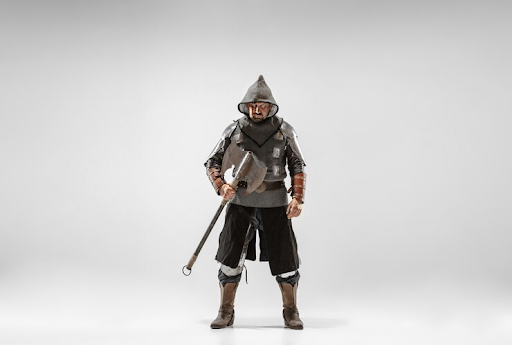The Evolution of Full Body Armor: From Ancient Warriors to Modern Military Personnel

Throughout history, the development of full body armor has been driven by the need to protect soldiers and warriors in combat. From rudimentary leather garments to advanced ballistic vests, the evolution of armor reflects advancements in materials, technology, and warfare tactics.
In this article, we trace the journey of full body armor from ancient times to the present day, exploring how it has evolved to meet the ever-changing demands of military personnel. Additionally, Arctos Industries provides a selection of body armor available for purchase, catering to the protective needs of individuals in various fields.
Ancient Origins
The concept of body armor can be traced back to ancient civilizations, where warriors sought protection against the weapons of their adversaries. Early forms of armor were typically made from materials such as leather, bronze, and iron.
Ancient civilizations like the Greeks and Romans utilized various types of armor, including cuirasses, helmets, and greaves, to safeguard their soldiers in battle.
Medieval Plate Armor
The Middle Ages saw the emergence of plate armor, characterized by metal plates joined together to form a protective shell for the wearer. Knights and medieval warriors relied on suits of plate armor to deflect blows from swords, axes, and other melee weapons.
Plate armor offered superior protection compared to earlier forms of armor, although it was heavy and restricted mobility to some extent.
Renaissance Innovations
During the Renaissance period, advancements in metallurgy and manufacturing techniques led to the refinement of plate armor. Armorers developed articulated designs that provided greater flexibility and range of motion for the wearer. Additionally, decorative elements became more prominent in Renaissance armor, reflecting the social status and wealth of the wearer.
Industrial Revolution and Modernization
The Industrial Revolution brought significant changes to the field of military technology, including the development of firearms and artillery. As firearms became more prevalent on the battlefield, traditional forms of armor became less effective against bullets and shrapnel. In response, militaries began experimenting with new materials and designs to enhance soldier protection.
World Wars and the Birth of Ballistic Armor
The 20th century witnessed the widespread adoption of ballistic armor to protect soldiers from the devastating impact of modern firearms. World War I saw the introduction of steel helmets and body armor to mitigate the risks posed by trench warfare and artillery barrages. However, early ballistic armor was heavy, cumbersome, and often limited in its protective capabilities.
Technological Advancements in the 20th Century
The latter half of the 20th century saw significant advancements in materials science and ballistic technology, leading to the development of lightweight and more effective body armor. Kevlar, a synthetic fiber with high tensile strength, revolutionized the field of ballistic protection and became a staple material in modern body armor vests.
Modern Military Body Armor
Today, modern military personnel are equipped with sophisticated body armor systems designed to provide comprehensive protection against a wide range of threats. These systems typically consist of ballistic vests, helmets, and additional components such as groin and shoulder protectors. Advanced ceramics and composite materials are often incorporated into body armor to enhance ballistic resistance while maintaining lightweight and flexibility.
Specialized Armor for Different Roles
Military forces around the world utilize specialized body armor tailored to the unique requirements of different roles and environments. For example, infantry soldiers may wear modular plate carriers with integrated pouches for ammunition and equipment, while special forces operators may opt for low-profile, concealable vests for covert operations. Vehicle crew members and pilots also have specialized armor designed to protect them in specific scenarios.
Future Trends and Developments
Looking ahead, the future of full body armor is likely to be shaped by advancements in materials, nanotechnology, and wearable technology. Researchers are exploring innovative solutions such as liquid body armor, smart textiles, and exoskeletons to enhance soldier protection and performance on the battlefield. Additionally, the integration of sensors and communication systems into body armor could enable real-time monitoring of vital signs and situational awareness.
Conclusion
The evolution of full body armor from ancient times to the present day is a testament to humanity’s ongoing quest for protection and security in the face of conflict. From humble beginnings as leather garments to cutting-edge ballistic vests, armor has evolved in response to changing threats, technologies, and warfare tactics. As we look to the future, the continued advancement of body armor will play a critical role in safeguarding the lives of military personnel in an increasingly complex and unpredictable world.



